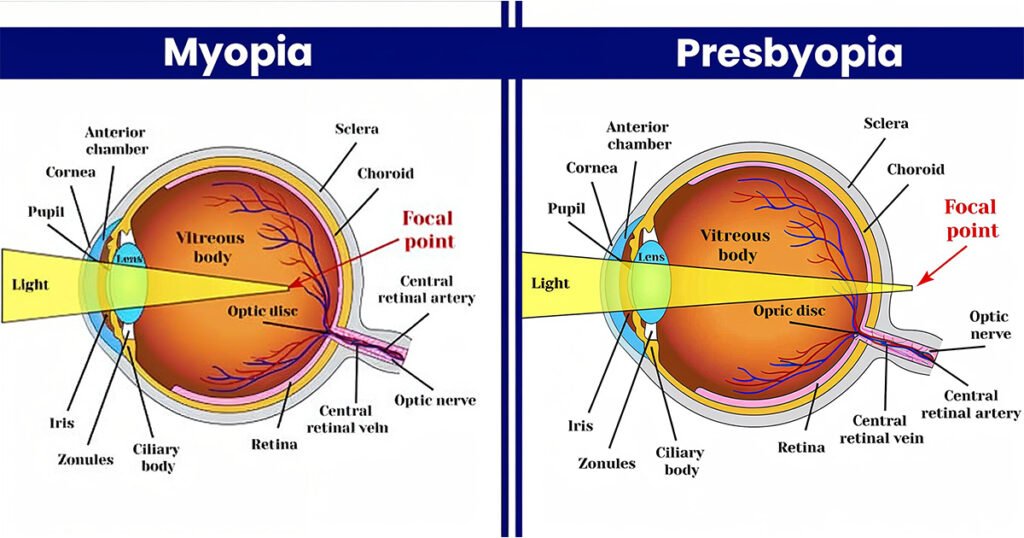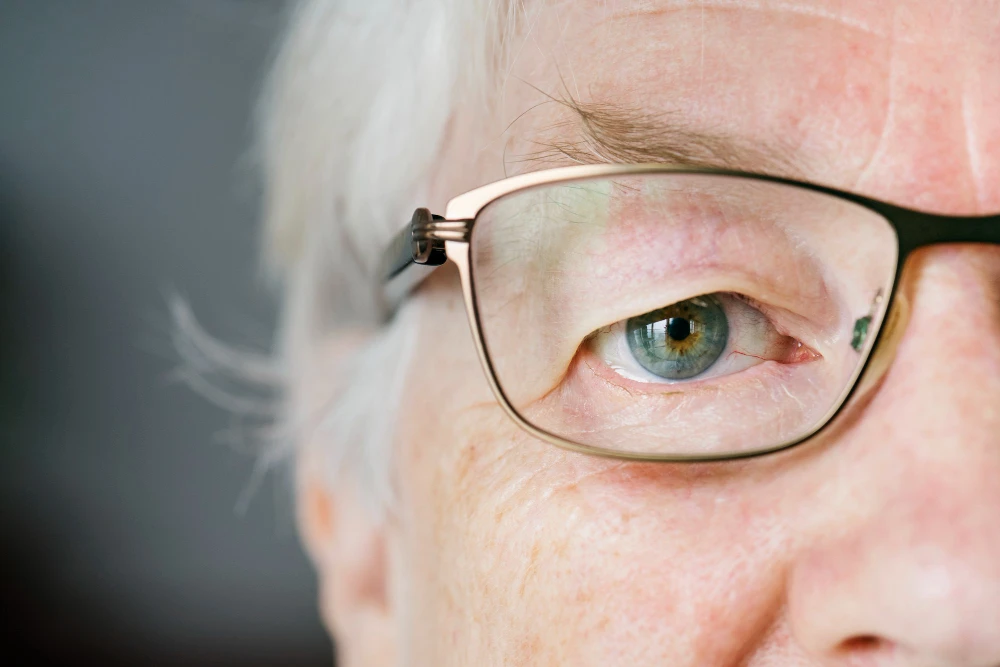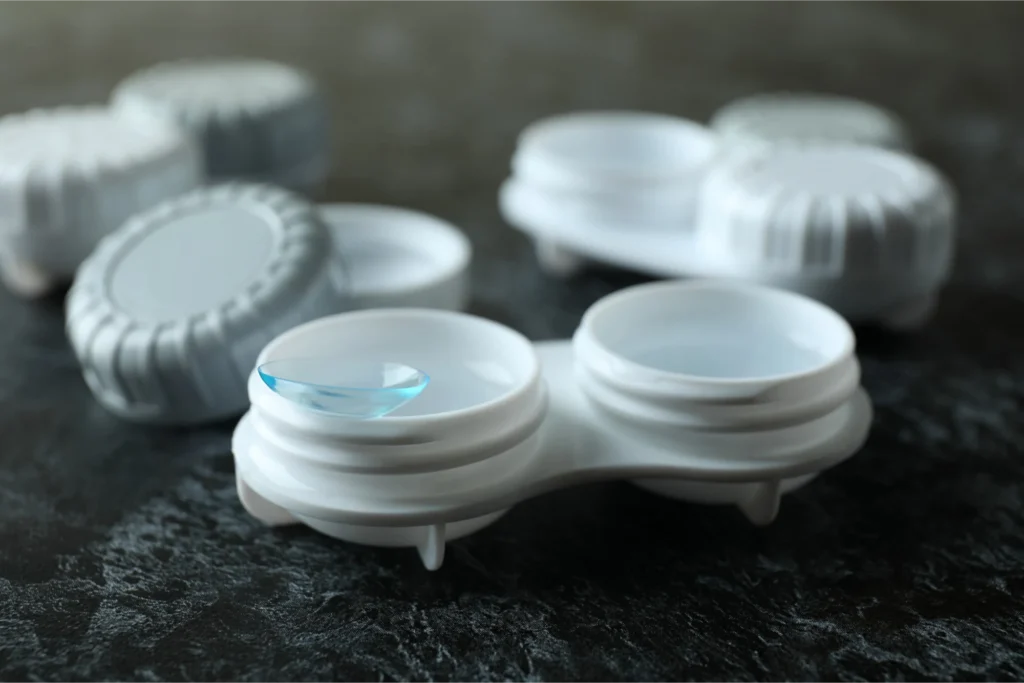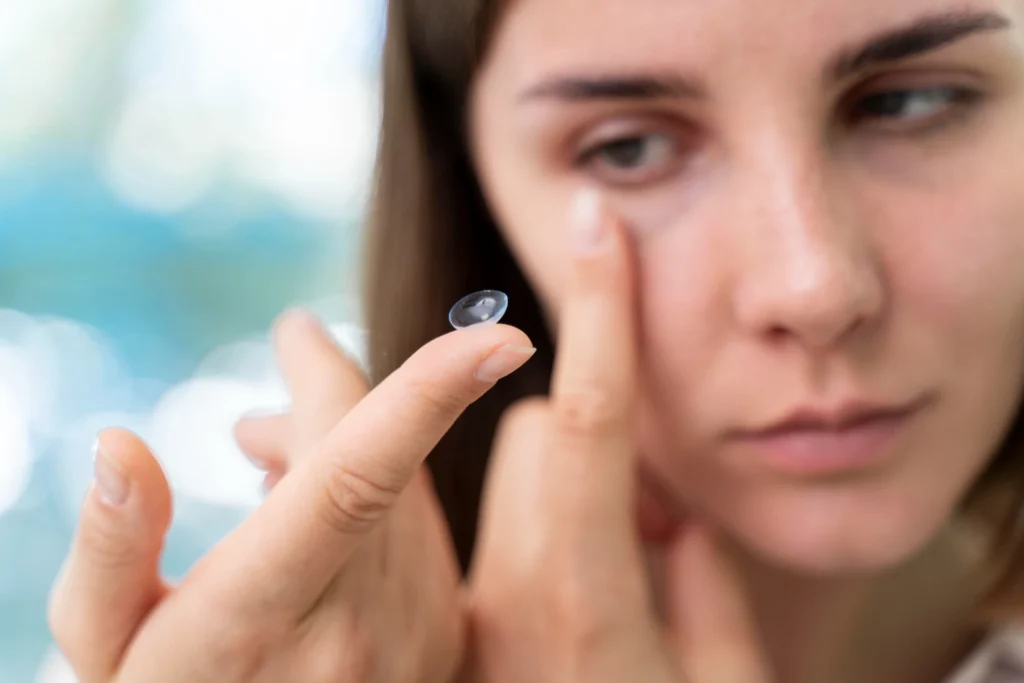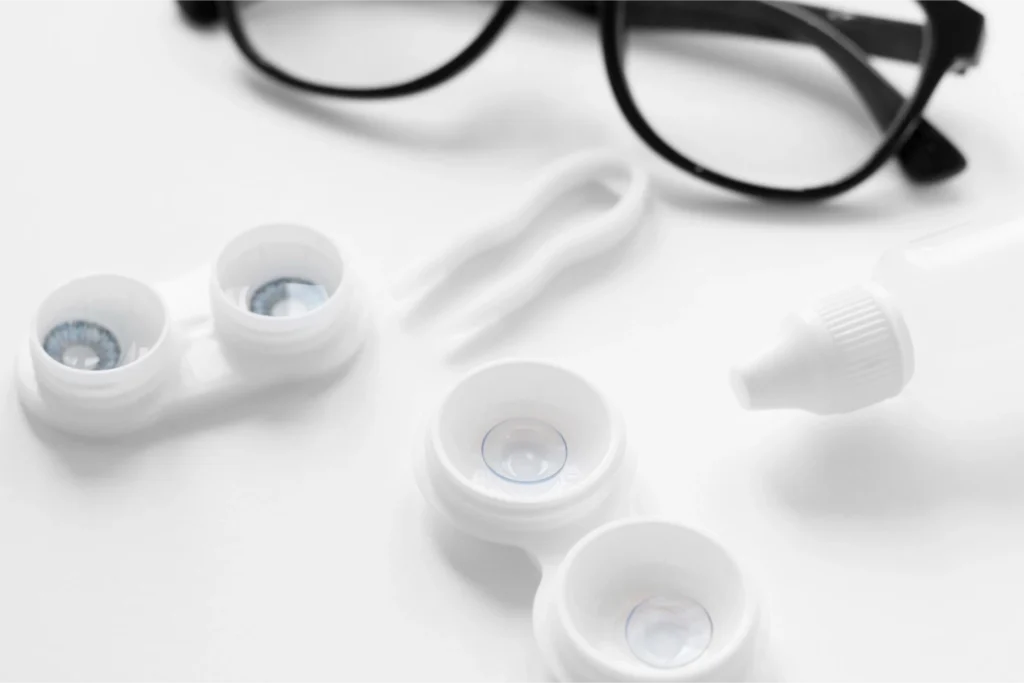If you’ve noticed your vision getting blurry, whether up close or far away, you might be wondering what’s going on. The most common causes are presbyopia and myopia, two types of refractive errors that affect how your eyes focus light.
In this blog, we’ll explain what presbyopia and myopia are, how they differ, and what treatment options can help you see clearly again. These vision conditions are very common and can affect your daily life if left unaddressed. That’s why scheduling comprehensive eye exams is so important; they help detect issues like myopia and presbyopia early, ensuring you get the right treatment before your vision worsens. With timely care and proper management, you can maintain clear and comfortable vision. Let’s take a closer look at how these two conditions differ and what you can do about them.
What Is Presbyopia?
Presbyopia is an age-related vision change that makes it harder to see things up close. It usually starts to appear after age 40, when the eye’s lens begins to lose its flexibility. This natural eye lens hardening makes it difficult for your eyes to quickly shift focus between near and far objects.
You might notice yourself holding your phone farther away to read a message or needing more light to see clearly. Common symptoms of presbyopia include eye strain, headaches, and difficulty seeing up close, especially when reading small print. Though it’s a normal part of natural vision decline, it can still be frustrating. Reading glasses, multifocal contact lenses, or refractive surgery options can help restore comfortable near vision.
What Is Myopia?
Myopia, also known as nearsightedness, means you can see objects clearly up close but struggle with distance vision. It happens when the eyeball is slightly longer than normal or when the cornea curves too steeply. As a result, light focuses in front of the retina instead of directly on it, causing blurry vision at a distance.
What causes myopia? Often, it’s a mix of genetics and lifestyle. Spending long hours on screens, reading, or doing close-up work without breaks may increase the risk. Kids who spend less time outdoors are also more likely to develop myopia. Symptoms of myopia include squinting, eye strain, and trouble seeing things like classroom boards or road signs. It’s one of the most common types of refractive errors, especially among teens and young adults.
Presbyopia vs Myopia: Key Differences Explained
While both presbyopia and myopia affect how light focuses inside the eye, they’re caused by different things. Understanding how each condition alters your vision can help you recognize symptoms early and choose the right corrective option.
Below is a quick comparison highlighting the main differences between presbyopia and myopia.
| Feature | Presbyopia | Myopia |
| Age of Onset | Usually after 40 | Often start in childhood or the teen years. |
| Vision Affected | Difficulty seeing near objects | Blurry vision when looking far away |
| Cause | Lens hardening due to aging | Eye shape causes light to focus in front of the retina |
| Treatment | Reading glasses, multifocal lenses, and surgery | Corrective lenses, ortho-k, LASIK |
| Can Coexist? | Yes, especially after 40 | Yes, people with myopia can develop presbyopia later |
In short, presbyopia is age-related, while myopia is structural. Some people actually have both clear vision up close early in life, which turns into double trouble later on.
Can You Have Both Presbyopia and Myopia?
Yes, and it’s more common than you might think. People who are nearsighted often find that their reading vision changes with age, too. If you have myopia, you may already wear glasses for distance. Once presbyopia develops, you might notice that even with those glasses, reading up close becomes harder. That’s because your lens flexibility decreases over time.
Modern corrective eyewear makes managing both much easier. Progressive lenses or multifocal contact lenses allow you to see clearly at different distances without switching glasses. If your vision has changed recently, schedule a comprehensive eye exam. Your optometrist can update your prescription and recommend the best vision correction procedures for your needs.
Can You Prevent Presbyopia and Myopia?
You can’t completely stop presbyopia, since it’s part of the eye’s natural aging process. But you can slow the progression of myopia and support long-term eye health.
Try to:
- Spend more time outdoors — natural light helps reduce eye focusing problems.
- Limit screen time and follow the 20-20-20 rule: every 20 minutes, look 20 feet away for 20 seconds.
- Eat foods rich in vitamins A, C, E, and omega-3 fatty acids.
- Get regular eye exams to catch age-related eye conditions early.
Healthy eye habits protect your visual acuity and may help prevent myopia naturally.
Treatment Options for Presbyopia and Myopia
When it comes to correcting these refractive errors, the best choice depends on your age, lifestyle, and vision goals. Your daily visual habits, like reading, driving, or screen use, also influence which treatment will work best for you.
Treatment for Presbyopia:
For presbyopia, options include reading glasses, progressive lenses, multifocal contact lenses, or refractive surgery like lens replacement. Reading glasses are the simplest and most affordable solution for close-up tasks. Progressive lenses and multifocal contacts offer the convenience of seeing clearly at all distances without switching eyewear. In some cases, surgical options like lens implants or laser correction can provide long-term vision improvement and reduce dependence on glasses altogether.
Common Treatments for Presbyopia:
- Reading Glasses
- Progressive Lenses
- Multifocal Contact Lenses
- Lens Replacement Surgery
- Laser Vision Correction
Treatment for Myopia:
For myopia, you might use corrective lenses, ortho-k, or laser eye surgery. Some patients even combine treatments for both, ensuring clear vision at every distance. In some cases, bilateral myopia, where both eyes are affected, may require a more tailored approach depending on the degree of nearsightedness and overall eye health.
Common Treatments for Myopia:
- Eyeglasses or Contact Lenses
- Orthokeratology (Ortho-K)
- Laser Eye Surgery (LASIK, PRK, or SMILE)
- Implantable Contact Lenses (ICL)
- Lifestyle and Vision Therapy Options
Note: Always discuss your options with your eye doctor to find the most comfortable and effective solution.
Protecting Your Vision at Every Age
Your eyes change throughout life, but proper care can help keep them strong. Wear sunglasses to protect your eyes from UV rays, manage blue light exposure, and make sure your workspace has good lighting. If you’re noticing difficulty seeing near or far, visit Vision Gallery, your trusted eye care provider in Katy. Our team understands the importance of myopia control and offers innovative, child-friendly treatments. We’re proud to be a certified provider of MiSight Daily contact lenses, proven to slow myopia progression in children. At Vision Gallery, we combine modern technology and compassionate care to help every patient enjoy clear, comfortable vision at any age.
